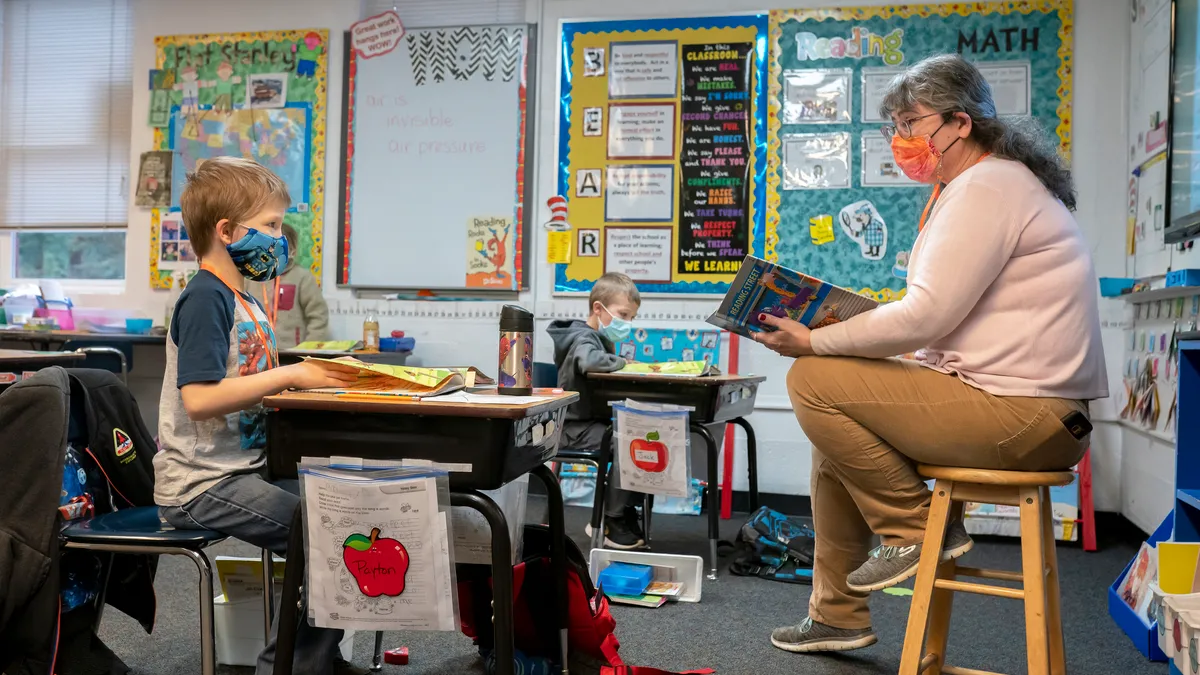Dive Brief:
-
The pandemic created a growing need for additional special educators to provide individualized services to students with disabilities, and though there is stimulus funding to hire more staff, school districts are struggling to find prepared personnel to fill vacancies, said Erin Maguire, president of the Council of Administrators of Special Education.
-
Special education teacher shortages are also a concern U.S. Secretary of Education Miguel Cardona said he is hearing from parents and educators nationwide, including on a trip he took Monday to North Carolina’s Charlotte-Mecklenburg Schools where he observed a summer learning program for students with disabilities.
-
As school systems strategize on spending $3 billion in American Rescue Plan funding for services under the Individuals with Disabilities Education Act, there is pressure to target spending on programs that improve student outcomes while at the same time-solving teacher and leadership recruitment and retention barriers, Maguire said.
Dive Insight:
All but four states — Alaska, Mississippi, Tennessee and Vermont — reported teacher shortages in special education during the 2019-20 school year, according to U.S. Department of Education data. Additionally, recently published survey results from Frontline Education revealed 71% of districts with shortages find it challenging to recruit special education teachers.
A lack of special educators is of particular concern because school systems are required under IDEA to provide individualized services to qualified students. Educators, families and advocates have said progress on students’ individualized education program goals could be hindered if there aren’t enough teachers.
In many cases, school closures due to the pandemic limited students with disabilities’ access to certain services and supports, although some students who received special education services thrived in remote learning.
The influx of stimulus funding for special education is significant for IDEA, which receives an annual appropriation of about $13.8 billion for state grants for services for nearly 8 million infants, toddlers and school-aged students with disabilities. More broadly, Elementary and Secondary School Emergency Relief funds can also support special education activities.
The Education Department funds technical assistance centers that provide support to states and districts on teacher recruitment and retention practices. It also has included examples of teacher pipeline best practices, such as Grow Your Own programs, in a handbook for reopening schools safely during the ongoing pandemic.
“We are sharing best practices, and we keep our ears to the ground because it's important that we hear from educators and parents and students what they need most,” Cardona said.
Maguire said while the sharing of best practices is helpful, states should consider developing and implementing a formal, comprehensive plan to address special education teacher shortages that also includes expected outcomes.
“I think we're concerned about seeing a very active and engaged process at the federal and state level to address this issue,” Maguire said. “This is far beyond what LEAs individually can solve as a problem.”
Maguire added that special education programs are also facing shortages in specialized instructional support personnel, such as physical therapists and speech language pathologists, as well as paraprofessionals.
The overarching concern, she said, is addressing how school systems can accelerate student learning without the needed teaching staff. “Will we make the difference that we're trying to make and extending these funds given all these issues, and what kind of outcomes will be expected afterward, and how will that play out politically after all of this money is pushed into the system?” Maguire said.








 Dive Awards
Dive Awards






